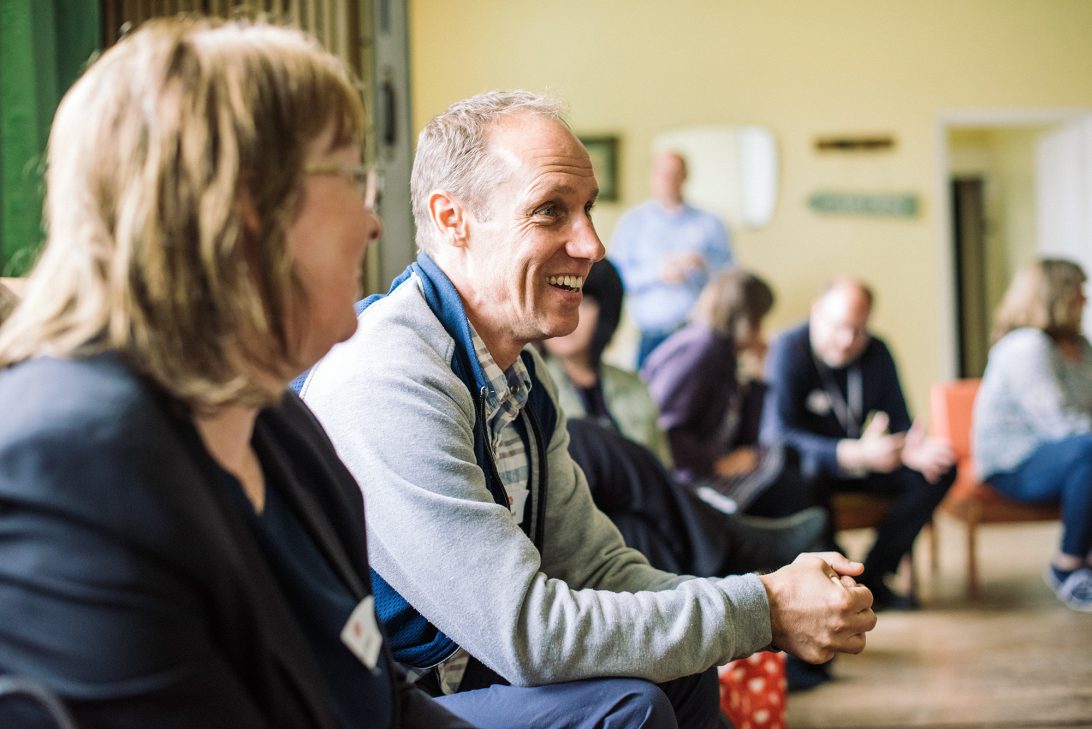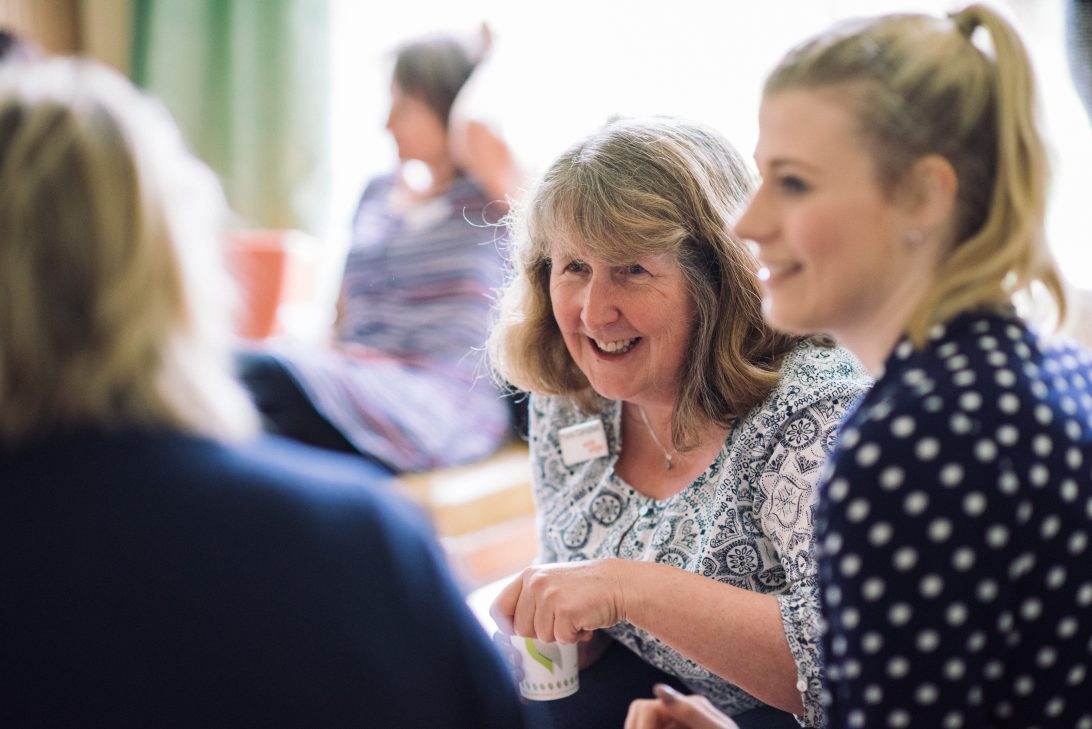
Rediscovering Welcome
Philip, a Barnwood Trust Community Builder, was invited to write a blog on what making everyone feel “welcome” means to him.
“Joining a new group or attending an event can sometimes feel a little unnerving. We may not know the rules, the other people attending seem to already know each other and we might be anxious about making mistakes. If we are having a difficult time in life in general then this can make attending a new group or event even more difficult.
In some places, the power of recognising and welcoming someone new is being overlooked. The “welcome” seems to have been lost, reduced to insignificant gestures: a duty rather than something much richer, much like in the hospitality industry where strangers are welcomed only if they have the money and credit cards.
We may have moved away from the original old English meaning of welcome: ‘Wilcuma’ – to accept the stranger with pleasure.
In some cultures the power of ‘welcome’ is held in very high-regard and the stranger on the doorstep is welcomed as one of the highest deities; there is, for example, an Indian saying that ‘Guest is God.’ Author Sophie Sabbage (i) describes the Zulu greeting ‘Sawubona’, which means ‘I see you.’ The response is ‘Ngikhona’, said looking into the other’s eyes, means ‘I am here’ (ii). As Sophie says, this is about how ‘our hearts need to know we are visible to others as acutely as our bodies need food, water and rest.’

Creating welcoming places is a key step to ensure we can all feel a sense of belonging and worthiness. Shining a light on our welcome can help us uncover, restore and re-grow our welcome. Bruce Anderson (iii), who has done much work around welcoming, says welcome is not something to be learnt, but rather it is something to be rediscovered. He says we sometimes need help to do this -to see again with fresh eyes. We are often too busy and have other things on our mind, but by recognising and removing the barriers we can rediscover the full wonders of welcoming.”
Definition of Welcome (Bruce Anderson): ‘The initial and ongoing interactions, with people and environment, that result in a feeling of belonging, and a willingness to engage.’
“In reality welcoming is easy to do but difficult to remember. To welcome means to really ‘see’ the person walking through the door, to see their gifts and to be open to receiving help, wisdom and guidance from the person we are meeting or helping. There is a wonderful piece of old wisdom that says that helping is similar to breathing; you have to breathe in as much as you breathe out if you want to sustain your life. This is similar to the Christian tradition where a welcome is connected to Jesus being both guest and host to us.
A great example of this is the story of a woman who recently shared with me her involvement with welcoming refugees to Gloucester; she talked about how she had thought she was the one welcoming and helping, only to find that it was her life that was being changed profoundly by the interactions.”

“So what can we do?
Bruce Anderson’s work with organisations around welcoming often starts with looking at where we learnt how to be welcoming and a chance to share a story when people felt unwelcomed. Employees are given the space to look at many different aspects of welcome. For example, signage; if the place is not welcoming on the outside, then people arrive on edge wondering how it will be. Is it easy to know what to do when you arrive? How are the phones answered? And employees have to feel welcomed in their own organisation if they are to be welcoming; so what might that mean in terms of inductions and training for new staff?
Similar questions can be asked of many local groups even where they are already providing a warm welcome. There is often more we can do, especially thinking about the welcome to new members. I remember a time I was interested in joining a local group; they were very active in organising many events. Yet I didn’t feel able to join as they seemed so together and well connected, there didn’t seem like there was room for a new member. Several years later I mentioned this to one of them who was horrified as they felt they went out of their way to be welcoming to new members. Since then they’ve made more efforts to talk to strangers and even offered to accompany them to their first meetings.
When welcoming takes off, Bruce describes how it creates life blood for the organisation. It is the same in communities, indeed the word ‘community’ comes from communitas (latin) and translates ‘as the moment we know we are one’. Often this starts with a welcome.”
Philip Booth, Community Building Guide with Barnwood Trust
Notes & references
(i) ‘Lifeshocks, And How to Love them’ by Sophie Sabbage 2018
(ii) Terry Tillman writes about this connection and the use of this greeting in the Sci-Fi film, Avatar. He says: ‘The eyes are the windows to the soul. When we connect with the soul, who we truly are, all things positive are present—joy, acceptance, compassion, understanding, cooperation, loving, peace of mind, humor, ease, simplicity and more. That is the nature of the soul. And isn’t this what we truly want, a positive experience in life? Add these moments together more frequently, and for longer periods and we have more of what we want.’ See more at: http://www.finerminds.com/consciousness-awareness/samburu-greeting-terry-tillman/
(iii) ‘Our Door is Open: Creating Welcoming Cultures in Helping Organizations’ audio cd by Bruce Anderson and Community Activators. There is also a much earlier paper which doesn’t, in my view, fully capture the richness and possibilities that are covered in the audio: ‘Creating Welcoming Places Workbook’ (2004) by Bruce Anderson and Dean Paton:http://www.communityactivators.com/downloads/WelcomeWorkbook.pdf
(iv) Bruce talks about how a leader is needed to champion this welcoming work, but that it is also crucial that everyone agrees with the aim to be more welcoming. Bruce sees four domains or areas of focus that are crucial in helping to build a welcoming culture. Here are some notes from his work to give a flavour of those domains:
- Storefront and building interior; if the place is not welcoming on outside people arrive on edge wondering how it will be. Is it easy for them to know what to do? How is the signage? Do the signs describes what to do, not what we don’t want people to do? How is the entrance? Water to drink, flowers, paintings, cleanliness, lighting and more can all be important. How welcome would you feel?
- Customer processes; this is all the interactions with people, like how the phone is answered, the first greeting, how accessible is information about the group or organisation and whether waiting times be reduced. As Bruce says, ‘a person feels welcome to the extent they feel respected’.
- Community Engagement; how welcoming is the group or organisation to other businesses and others in the community?
- Employee support; employees have to feel welcomed in their own organisation if they are to be welcoming; this is about recognising gifts, induction processes, rituals for leaving, and how to challenge employees who do not act in a welcoming way.
To read some more stories about communities coming together to welcome others, please visit our stories pages. Have a story you would like to share? Send us a message via our contact us page or social media